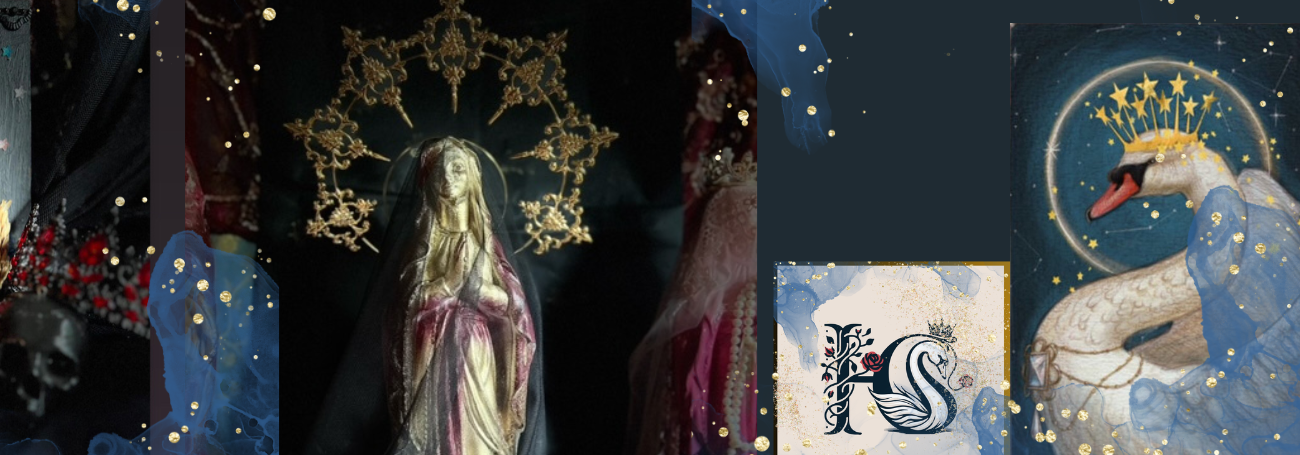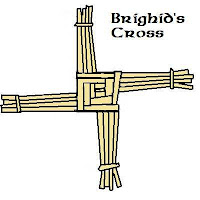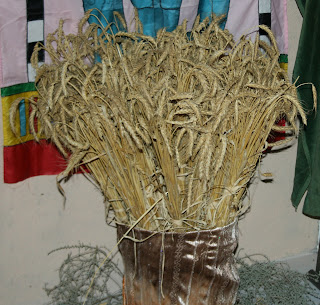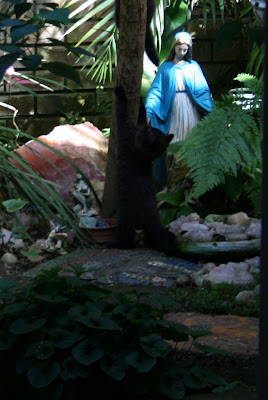Category: eastern spirituality
jai jai maa!




Birthday of Mother Mary – 8 September
The dates of 7 and 8 September are the most sacred to devotees of Mother Mary. The 8th of September is known as Her birthday. The first initiation into the Temple of Mary is taking place on these auspicious days.
Mary is personification, embodiment and goddess of spirit in ‘matter’ (mater = mother). The sacred body of Earth and all living beings is the Mother.
As we approach the end of Kali Yuga, a transformation is taking place and a new mythos is being born into the consciousness of humanity : that of the Cosmic Mother and the Sacred Feminine and very importantly and powerfully, the mythos of the Sacred Marriage, the Union.
Mary, as divine mother for our times, is recognized in all cultures and traditions. Here is an extract written by Elizabeth Clare Prophet in the lineage of the Ascended Masters :
Mary – World Mother
In knowing Mary as she really is, I have come to see her as a relentless and constant force, challenging the oppression of her children everywhere, in every faith, in every religion.
She is a World Mother, and I have seen this in her tremendous mastery of life. Her knowledge of administration and organization, as she has conveyed it to me, has given me the real teaching of how to administer my organisation and, with a very capable staff, bring it to this level of complexity of service that we enjoy.
The Mother Flame
When we want to master the details of life in any field, we realize that it is the Mother aspect of God that actually corresponds to Matter, or the Matter universe, as mater is the Latin word for Mother.
And so, here on earth, if we are going to accomplish anything, we must invoke the Mother flame. We must understand the Hindu concept of the Mother aspect of God as the Shakti, the active principle, the force that brings into manifestation the Father’s will.
Ask Mother Mary
So if you want to know how to get things done and how to get them done because your aim is helping people and glorifying God—which is our only reason for being—then ask Mother Mary. And you will find that she is truly a master and not an ignorant peasant woman who happened to be called to give birth to Jesus, as some would have us believe.
 Twin Flame of Archangel Raphael
Twin Flame of Archangel Raphael
Mother Mary is of the angelic evolution. These hierarchies also serve on the seven rays of the Godhead that emerge through the prism of the Christ consciousness.
Mother Mary’s ray is the fifth ray, the ray of emerald green, the ray of healing. It is the ray of science, of medicine, of supply and abundance. The economy also comes under the fifth ray.
The Mind of Mary
Mother Mary, then, has great talents in many areas. I don’t think there is a field of human endeavor where she does not have the expertise and understanding to teach others how to realize and implement the highest and best goals. Mother Mary’s mind is vast, vast beyond comprehension.
As we see Mary in the present day, we move to the understanding of a woman in our midst—a Mother Mary who is as modern, as liberated, as tough, as determined as many of the finest women we might meet on earth who are fighting for various causes.
Friend and Companion
We need to see her as friend, as companion, as sister, although she may rightfully be called “goddess” because of the tremendous God consciousness she has.
We must not place her on the pedestal that forces us to become idolaters of her image. But we should revere her in the sense that she has great attainment and great standing in heaven and was chosen to be the mother of Christ because she had the ability to hold the light and the balance for his entire mission.
Mother Mary – Healer
And so the Mother comes to heal us of our sense of sin regarding ourselves or other people. She comes to liberate us, especially in the Christian world, of the enormous division that renders Christianity ineffective. And of course, she comes carrying the sorrow of the people of every single nation on the planet and the determination to help them as we give the prayers and the calls.
Archetype of the New Age Woman
 Mother Mary has bequeathed to humanity the archetype of the New Age woman. By her example and constancy, she calls forth the Divine Woman in us all.
Mother Mary has bequeathed to humanity the archetype of the New Age woman. By her example and constancy, she calls forth the Divine Woman in us all.
She not only shows us how the feminine principle can be redeemed, but why it must be redeemed in order that the Divine Manchild as the unfolding Christed man and Christed woman might appear within every son and daughter beloved of God.
Until the feminine principle of the Godhead is ennobled in each man and each woman, the Christ cannot be born. And until Christ is born in the individual, the evolving identity of man and woman cannot experience the new birth.
Thus, the rebirth of the Christ in man and woman, often referred to as the Second Coming, is necessary for the salvation of the soul; indeed the individual Christ Self is the Saviour of the world of the individual.
Mary’s Appearances Since Her Ascension
Since her ascension, Mary has made several famous appearances and continues today to respond immediately to the call of any and all of her children on earth. In the twentieth century alone, more than two hundred appearances of Mary, the Mother of Jesus, have been reported in over thirty countries.
Some claim Mary has appeared to them as they pray. Others say they have watched her statues “weep” or have seen her images on walls or windows. And some tell us that Mary has revealed to them urgent prophecies and secrets.
Mary has entrusted her messages to unlikely ambassadors—not prelates or popes, presidents or politicians, but children and simple folk. Innocent ones who could receive her messages in humility and convey them with undiluted simplicity.
For forty years Mother Mary gave messages through Mark and Elizabeth Prophet to comfort and enlighten spiritual seekers of all paths.
Excerpted from The Age of the Divine Mother, The Golden Word of Mary series by Elizabeth Clare Prophet.
Upcoming retreat by The Temple of Mary
Holy Day of Our Lady of Lourdes
Anandamayi Ma

‘At dawn, we went by cycle rickshaws to the railway station. Even at that early hour, pilgrims flocked to the Ganges in a steady stream. Finally, hooting, with a cloud of smoke trailing overhead, the train from Varanasi pulled in, and screeched to a halt. Four young men in spotless white dhotis entered the first class compartment, and carried Ma out on a chair, to which four handles were attached. Ma looked fragile and delicate, wrapped in white cotton cloth. Her black, oiled hair fell over her shoulders. She looked at us with calm eyes. There was no reaction on her face, no sign of recognition of her devotees, many of whom she would have known for decades. She simply looked and her eyes moved slowly around the group. It was pleasant, and I had the strange feeling, that nobody was there behind those eyes. Inexplicably, tears started rolling down my cheeks. “That’s normal when one is touched by a great soul,” someone next to me reassured me. Indeed, I had the feeling that I had been touched by a very pure soul.
While waiting for Ma, we were singing bhajans or reciting the Hanuman Chalisa. Once, a girl of about 10 sat next to me. She sang full-throatedly, though a little out of tune. Listening to her, I liked her more and more. My heart was overflowing with love for her. Then the verandah door opened, and Anandamayi Ma appeared, supported by two women. Even before she reached the cot, she briefly stopped; half turned, and looked somewhat irritated in my direction. When she finally sat down on the cot, her glance settled on me for a long time. Yet this time, Ma’s glance did not strike me or induce any feeling. It seemed as if there was no centre that could have been struck. I simply looked back at her.
Probably Ma’s glance was attracted by the love that I felt for that girl, and probably she really did not perceive us as separate persons. After all, she often declared that it is a mistake to consider one as separate from others. However, almost certainly all of us, as we were sitting there on the verandah during her daily darshan, wished that she appreciated us personally. In addition, if we were honest, we most likely even wished that she appreciated our own person a little more than she appreciated the others.
However, Ma didn’t oblige. She was not consistent in her attention and affection. A genuine guru can see, even if his disciple can’t see it, that the ego is the culprit which makes life difficult. Naturally, he is not interested in flattering the ego and strengthening it – on the contrary. “The association with an enlightened being consists in getting blows to the ego,” Anandamayi Ma once remarked. My ego felt the blows. For example, when she didn’t look at me for long, and it reacted with heavy, resentful thoughts. It wanted to leave. On the other hand, I felt attracted to Ma, because I learnt around her almost effortlessly a new way of life – for example that everything is just right as it is.
“Trust in God. He certainly will look after you and all your affairs, if you really put full trust in Him, and if you dedicate all your energy to realise your self. You then can feel completely light and free,” Ma claimed and it sounded convincing. By ‘God,’ she meant the formless essence in everything. Nevertheless, this essence is not something abstract and cold. It is love, and can be experienced as the beloved. She also said, “You are always in His loving embrace.”
Extracted from www.lifepositive.com/spirit/gurus/the mother supreme
(Matri Darshan Ananda Mayi Ma).
La Feile Bride
St. Brigid’s church in Kildare was built on a site sacred to Brigid. Where Her eternal flame had once been tended by 19 priestesses, 19 nuns took it in turn to each tend the flame for a day and a night. On the 20th day, the Goddess (or the saint) tended the flame herself.
 |
| The Sacred Well and Shrine at Kildare |
An old poem stated; “Today is the day of Bride, The Serpent shall come from the hole.” An effigy of the serpent was often honoured in the ceremonies of this day, making it clear that Brighid had aspects as a serpent goddess. As the serpent sloughed its old skin and was renewed, so the land shook off winter to emerge restored; the snake symbolised the cycle of life. When Brighid’s cult was suppressed, then St Patrick had indeed banished the snakes [Pagans] from Ireland. However, Brighid’s popularity was so great that the church transformed her into a saint, allegedly the midwife of Christ and the daughter of a Druid who was converted to Christianity by St. Patrick, and who went on to found the Abbey of Kildare.
 |
| My painting of Bridgit |
Brighid was invited into the home by the woman of the house, in the form of a doll or corn dolly dressed in maiden white. Oracles were taken from the ashes of the hearth fire, which people examined for a sign that Brighid had visited, i.e. a mark that looked like a swan’s footprint. If found, it was considered a lucky omen. The swan was an ancient attribute of the goddess Brighid. Many Irish homes still have a Brighid’s cross hung up somewhere. This was originally a solar symbol.
A small community of Brigidine nuns are keeping the sacred light of Brigit burning at Solas Brihde in Kildare. I spent a week in Kildare, walking the pilgrimage of Bridgit, visiting her sacred well
| Carving of Bridgit milking a cow – on Tower of Michael, the Tor, Glastonbury A blessed La Feile Bride to you!!
|
But it is Saraswati’s humble mat on which sits wisdom.
The Goddess
This is the writing of Anna Franklin of www.merciangathering.com
The Path of Love
The Path of Love is a path towards peace, happiness and ultimately knowing your real self. Your real identity lies in a core consciousness beyond the mind and ego. When you move beyond your limited idea of ‘I’ or ‘me’ and you move into extending love to yourself and to all beings, then you are on the path of Love and the path towards uncovering the real you.
Love is Light made manifest. In Vedic teachings we are given a beautiful image of a shrine in your sacred heart (your inner non-physical heart). In this shrine or cave, burns a candle brightly. Nothing can extinguish this candle. It radiates peace and stillness and silence eternally. ‘My love radiates like a bonfire. It is focused on none and denied to none.’
To a seeker with a willing heart, this is a natural path that will unfold in front of you as you take each step. No striving, no violence required, gently, gently does it.
The Path of Love is a divine marriage between masculine and feminine selves, through all levels of your being. This sacred marriage, the hieros gamos, takes place on the mental, emotional, physical and spiritual levels of your being; it takes place between Soul and Spirit, Spirit and the Living Light.
The word enlightenment is used in many contexts and with many different meanings. If you look at it simply, it says en-light-en-ment, moving into the light or being filled with light. Love is the manifestation of the Living Light. Moving into the light requires action (masculine) and being filled with light requires receptivity (feminine). You can look at it as a two-fold path of eliminating darkness and to bring in the light : the light that is already there.
What do you expect from enlightenment? Surely happiness. When you have deep inner happiness, you need nothing else. No external circumstance can affect a deep happiness that bubbles forth from within. When you are happy, you are ‘in love’ with the world and all its wonders. When you are happy, you seek nothing and you lack for nothing. Happiness is also called bliss, or Ananda.
The Path of Love will take you within, to the fountain of this inner happiness, the river of Light that flows through you without ever running dry, which is within you.
The process that leads to enlightenment is gradual and requires patience. It does not deliver big pyrotechnic dramatics, but it does yield ever-increasing peace and self-acceptance and the purification of stress.
But none of this will be obvious to the one that does not live in awareness. Awareness is your intuition and it is often veiled over by negativity in the mind; external distraction and the emotional response to stress.
Stress is caused by negative thoughts, and the emotional response to experiences that create fear in you. We do not have a choice about what happens to us, but we do have a choice as to how to respond. Every response and action by you, has a chemical reaction in your brain. This chemical reaction can deliver serotonin, which brings you joy and a sense of well-being, or it can deliver disharmony which will affect all cells in the body. This disharmony takes you out of alignment with your Source and it creates stress in mind and body.
Meditation alters the brain in many positive ways. The main purpose and focus of meditation should be purification. The physical effects of sitting quietly and going inward are many. It activates the prefrontal cortex and stimulates the release of neurotransmitters, including dopamine, serotonin, oxytocin and brain opiates. According to Dr Deepak Chopra dopamine is an antidepressant; serotonin is associated with increased self-esteem; oxytocin is believed to be the pleasure hormone and opiates are the body’s pain killers.
Fears and anxiety are not merely psychological issues. All emotions have a correlate in the brain and these manifest in your physical body as imbalances and disease. Humans have memory and we remember painful occurences and fear them re-occuring. We may bury these fears deep into our subconscious, but the body will manifest these hidden thoughts and beliefs. We as humans are very adaptable and we adapt our behaviour and reasoning to hide these painful memories and fearful thoughts from ourselves. We move into denial, rationalisation, escapism and anger, to avoid awareness of the unlived life beneath the surface of the mind.
But through the central nervous system the brain makes every cell in your body aware of those buried thoughts and fears. And through your inner awareness you can access what your body is telling you. Your body and heart will communicate to you what is really happening beneath the surface. But in order to have greater awareness, you need to purify your mind of the negative thinking and responses.
This is achieved through diksha, mantra, meditation, forgiveness and Love as action.
Diksha is a transference of energy. This is usually between guru and follower, but you can receive Light directly from the Living Light at all times.
Mantra is the repetition of a sacred name or sentence. It is an invocation, containing a sacred syllable or set of syllables. A mantra has the power to awaken the divinity that resides in that vibration.
Meditation takes you into utter stillness. In this stillpoint there is no thought, no intellectual movement and in short, no ego present. When you stay in this stillness for long periods of time, the neural pathways are purified and eventually re-set to a new path. Negative emotional responses can be removed and replaced with ones of compassion and acceptance.
You can choose your actions and responses. When you are caught up in subconscious behaviour (also called the shadow self, the hidden part of yourself), you are often caught unawares by your own response and action. You may find yourself sabotaging your own happiness and hurting others without your conscious choice.
Your heart is the barometer of your soul. At any time you can listen to your heart and hear what it wills you to do or not to do. As part of your action of choice, always consult your heart before you act on emotion. Your heart is the doorway to experience empathy, compassion and love. When the Sacred Heart of Compassion is awakened in you, Love flows through you and blesses the world and everything in it.
The next step of action that forms part of your sadhana (spiritual practise/application) on the path of Love, is bhakty. Bhakty is the focused and committed devotion of your will, your heart, your body and your soul, to the Living Light and its manifestation as Love on this Earth.
The action of Love encompasses the above steps of sadhana (meditation, diksha, mantra and others) and this action will awaken the Sacred Mother, Kundalini, within you. Kundalini is not limited to kundalini yoga. Kundalini is the flow of the Living Light within you and it is acknowledged in all spiritual paths and many religions. The ignition of the fire that does not burn, is known as Shaktipat, the descent of the Holy Spirit, Baptism of Grace amongst others.
When kundalini (Shakty) has awakened in you, your path intensifies. Through its intensity and inner fire, you are purified. It is a blessing desired by all those on the spiritual path. There are myths and legends around kundalini. However, it is the Living Light that flows in you and the discomfort and inner pressure, spurs you on to go ever deeper into awareness and into Love.
You may also want to read my posts on Awareness, Acceptance and Surrender on http://pathofdivinelove.blogspot.com and http://shaman-shewhoknows.blogspot.com
Om Namo Bhagavate Mata















.jpg)





